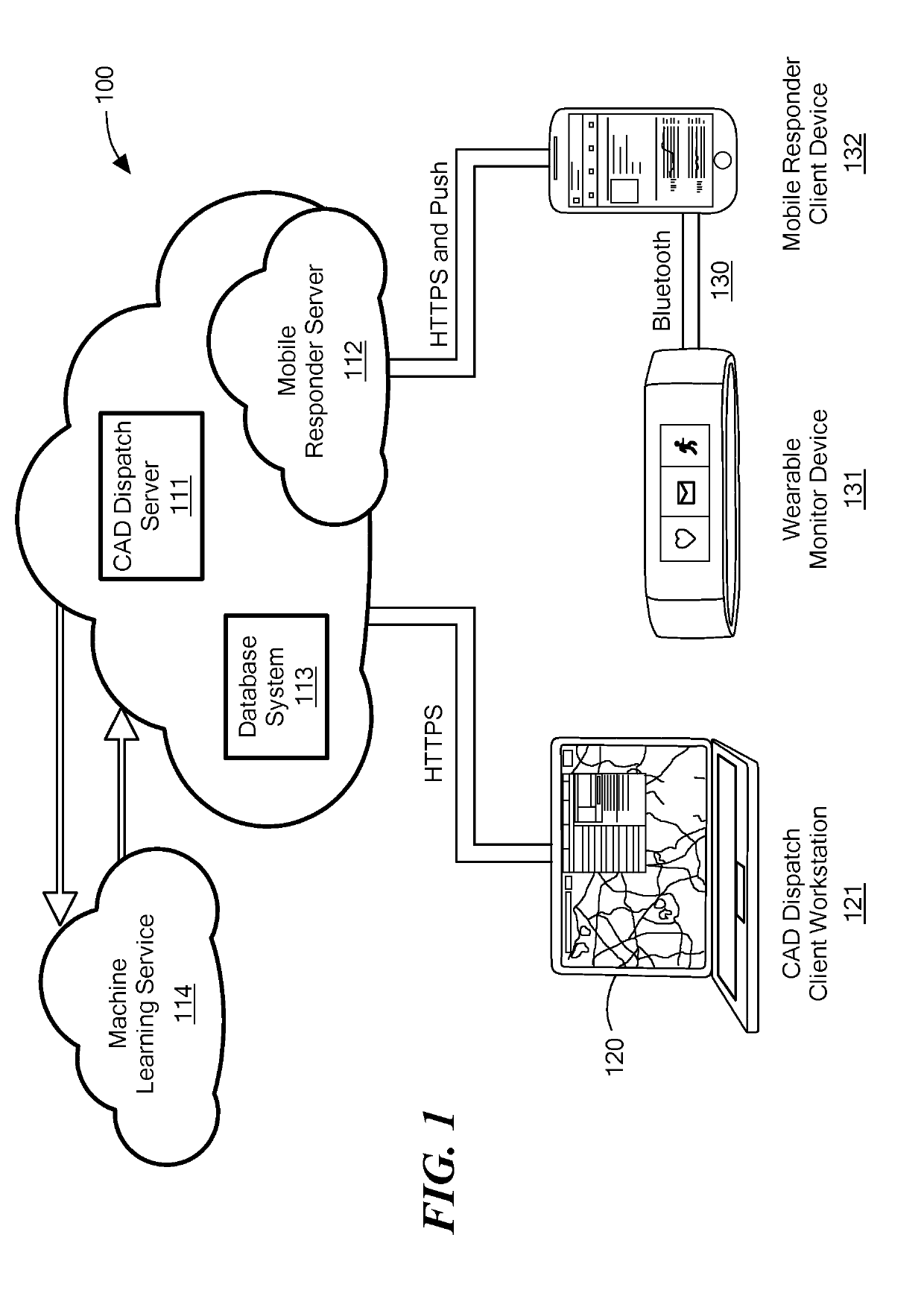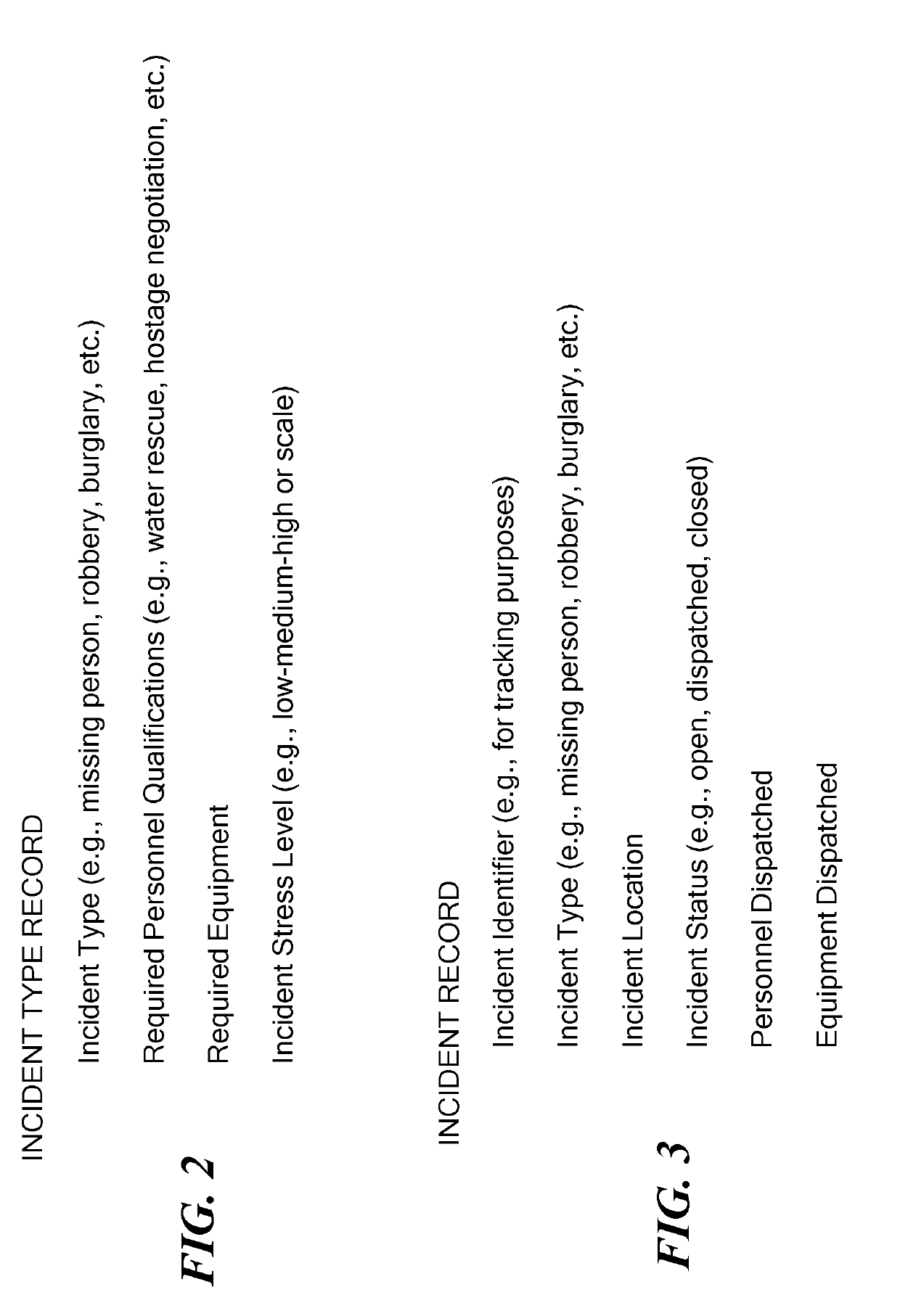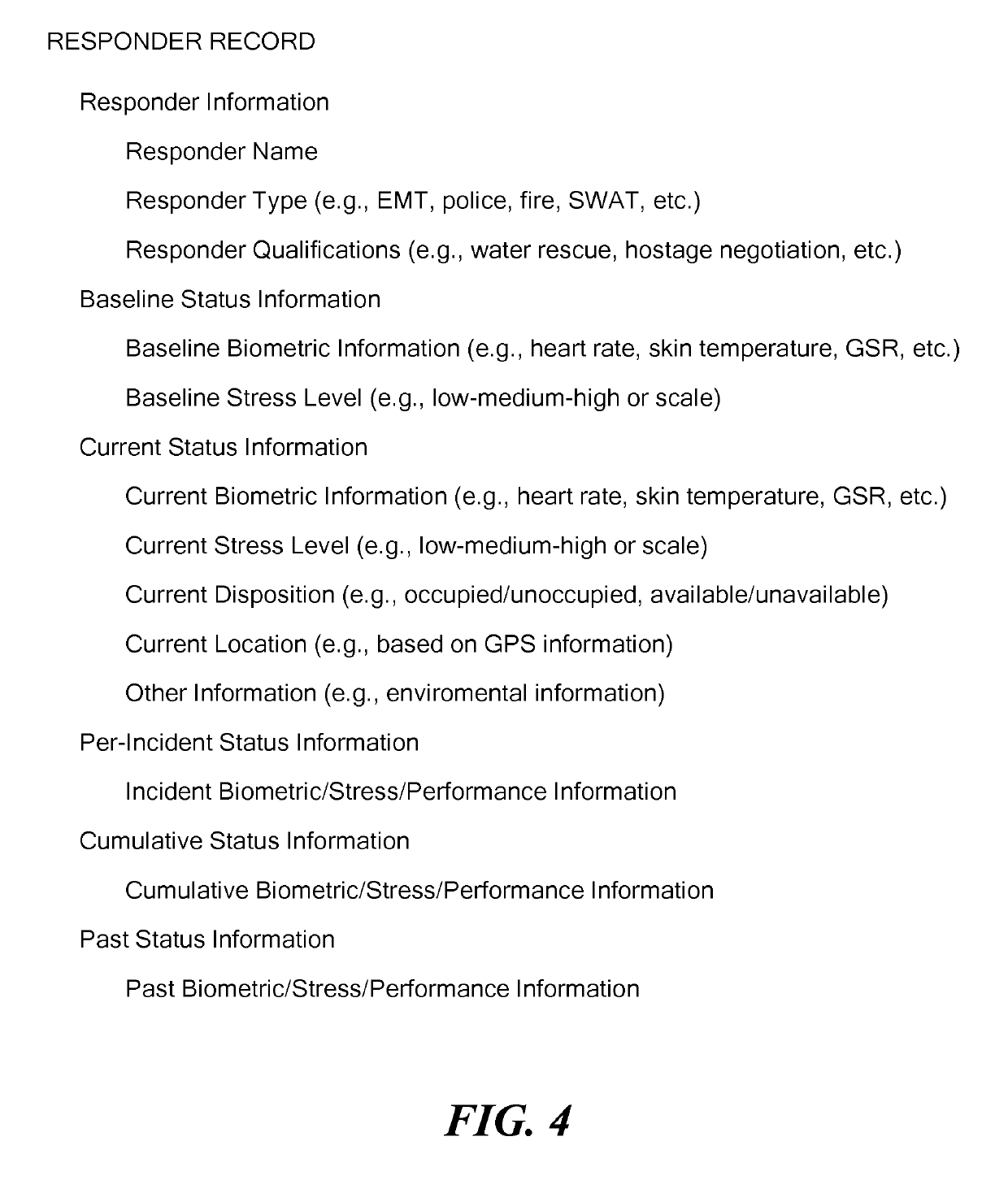Computer-Aided Dispatch Systems and Methods Utilizing Biometrics to Assess Responder Condition and Suitability
a dispatch system and biometric technology, applied in the field of computer-aided dispatch systems, can solve the problems of unreliable and subjective methods, delay in dispatching additional resources, and safety issues of first responders and additional work of emergency dispatchers, and achieve the effect of evaluating the relative suitability of responders
- Summary
- Abstract
- Description
- Claims
- Application Information
AI Technical Summary
Benefits of technology
Problems solved by technology
Method used
Image
Examples
Embodiment Construction
[0011]Embodiments include a computer-aided dispatch (CAD) system and a computer-aided dispatch (CAD) method configured to receive, for each of a plurality of responders, biometric sensor data generated by a biometric sensor device worn by the responder; store, in the CAD database, the received biometric sensor data and, for each of the plurality of responders, healthy range data derived from the biometric sensor data; receive information for an incident including an incident type and an incident location; determine a set of requirements for the incident based on the incident type; determine, for each of the plurality of responders, a current condition of the responder based on (a) the biometric sensor data generated by the biometric sensor device worn by the responder, (b) the healthy range data for the responder, and (c) elapsed time between discrete activities of the responder; evaluate relative suitability of the responders for the incident based on the current conditions of the ...
PUM
 Login to View More
Login to View More Abstract
Description
Claims
Application Information
 Login to View More
Login to View More - R&D
- Intellectual Property
- Life Sciences
- Materials
- Tech Scout
- Unparalleled Data Quality
- Higher Quality Content
- 60% Fewer Hallucinations
Browse by: Latest US Patents, China's latest patents, Technical Efficacy Thesaurus, Application Domain, Technology Topic, Popular Technical Reports.
© 2025 PatSnap. All rights reserved.Legal|Privacy policy|Modern Slavery Act Transparency Statement|Sitemap|About US| Contact US: help@patsnap.com



